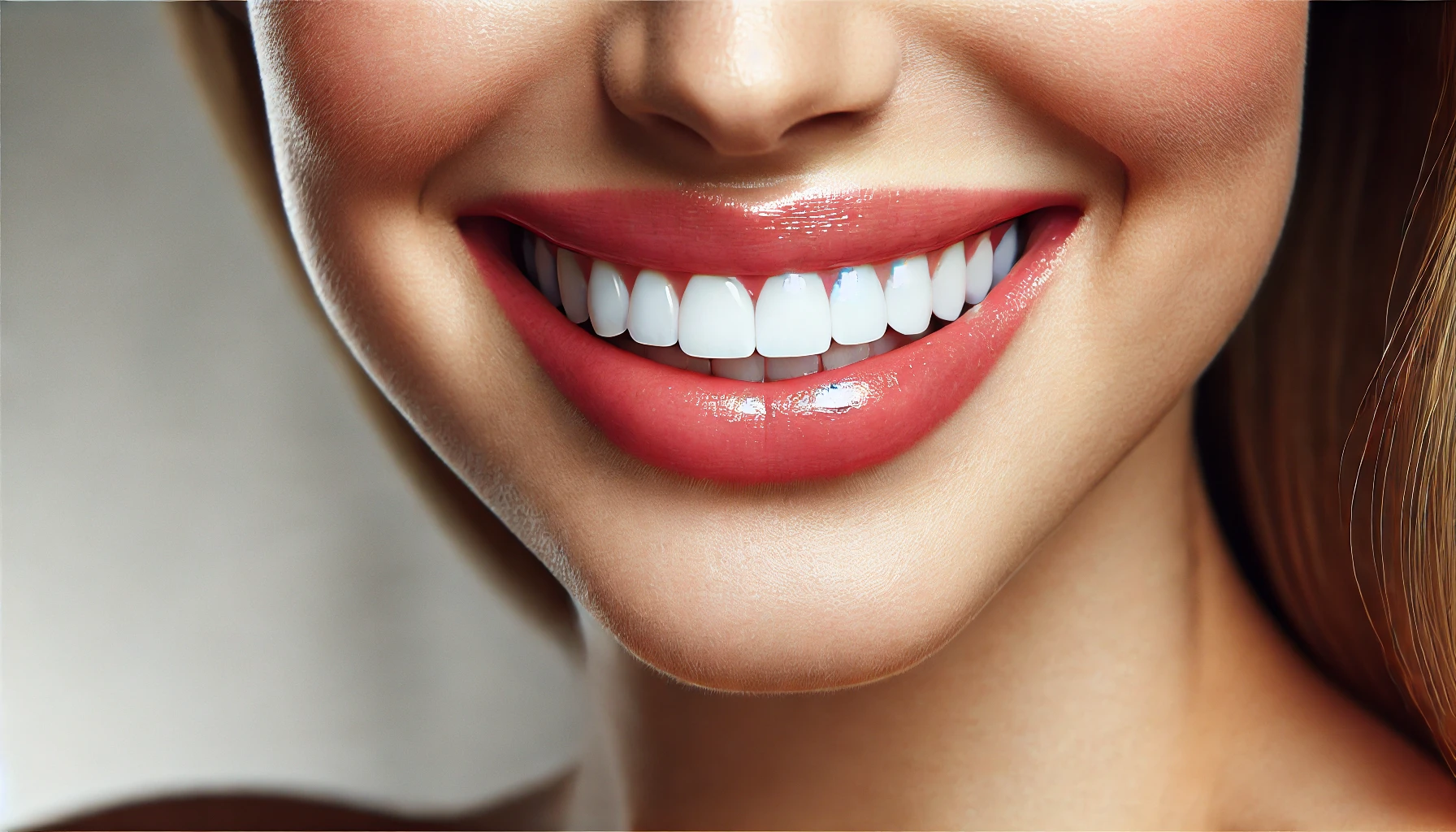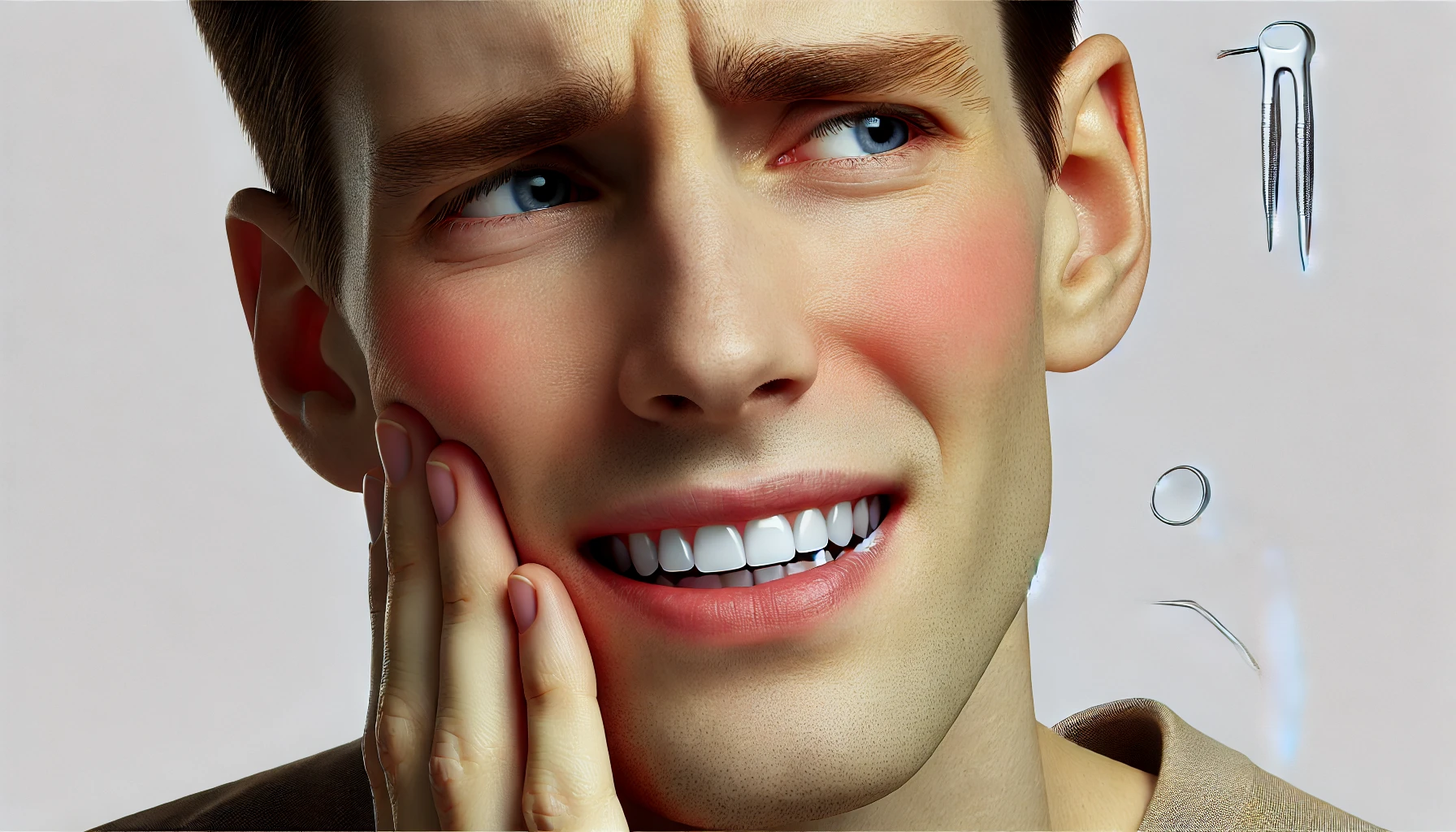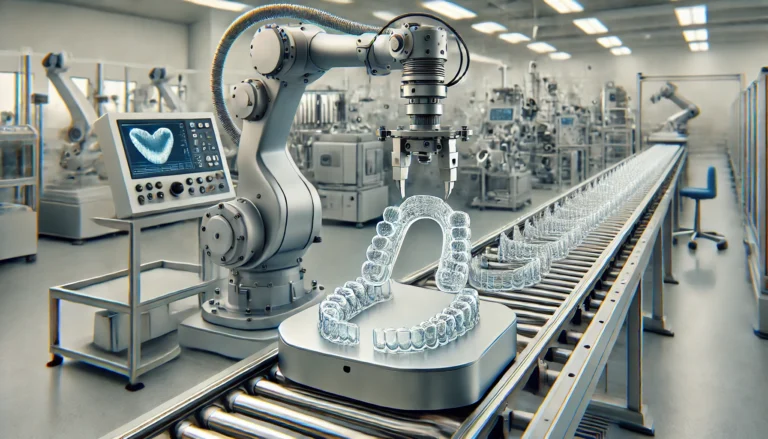
If you are looking for a straighter smile without the inconvenience of traditional metal braces, Invisalign may be an ideal solution for you. This innovative orthodontic treatment utilises clear aligners to gradually shift your teeth, providing a discreet and comfortable alternative. But does Invisalign hurt? Addressing this common concern is essential to understanding the overall treatment experience.
In this discussion, we will delve into how Invisalign works, what you can expect during your treatment, and the various benefits it offers. Furthermore, we will address common concerns, such as discomfort and potential side effects, to assist you in making an informed decision about your dental journey.
What is Invisalign?

Invisalign represents a contemporary solution for teeth straightening, employing clear aligners to gradually move teeth into their desired positions. This option is particularly appealing for those seeking a more discreet orthodontic treatment.
Its innovative approach has gained considerable popularity in the UK, providing a cosmetic dentistry alternative that aligns with the aesthetic preferences of many patients.
While the cost of Invisalign in the UK may be higher than traditional braces, its removable and nearly invisible aligners make it a preferred choice for adults and teenagers alike, offering unmatched convenience and comfort.
How Does Invisalign Work?
Invisalign functions by using a series of custom-made aligners that apply gentle pressure to the teeth. This gradual pressure helps move the teeth into their desired positions over time.
The entire process is guided by a personalised treatment plan developed by your orthodontist.
Is Invisalign Painful?
Many patients often enquire about whether Invisalign is painful. While it is true that some discomfort and sensitivity may arise—particularly during the initial adjustment to new aligners—this is generally manageable.
Most individuals find that any discomfort subsides relatively quickly as their mouths adjust to the treatment.
What to Expect During Invisalign Treatment?
During Invisalign treatment, patients can anticipate a comprehensive journey that involves regular dental visits, custom aligners that typically require changing every two weeks, and a treatment timeline tailored to their individual needs and progress.
Each stage of this process is vital in achieving the desired results. The initial consultation lays the foundation, during which dental professionals develop a customised treatment plan using advanced imaging technology.
As patients move through each phase, follow-up appointments become essential for monitoring progress and making any necessary adjustments. It is important for individuals to actively participate in their treatment by following the recommended wear schedule, which is usually 20 to 22 hours a day, and by maintaining excellent oral hygiene.
This proactive approach not only boosts the effectiveness of the treatment but also helps prevent any complications that may arise during the process.
How Long Does Invisalign Treatment Take?
The duration of Invisalign treatment can vary from person to person, but generally, most patients can expect to complete their journey to straighter teeth within a timeframe of 12 to 18 months. This timeline is influenced by several factors, including age, the complexity of the case, and how closely one follows the treatment plan.
The severity of bite issues is particularly important in determining the length of the treatment. For example, more pronounced misalignments or overcrowding may require a longer duration to achieve the desired results. Additionally, the spacing between teeth can affect the timeline; if the teeth are spaced too far apart or need to be repositioned for better alignment, this may necessitate further adjustments.
Age can also play a significant role, impacting both the complexity of the treatment and the speed at which the teeth respond to adjustments. Furthermore, an individual’s overall oral health can either present challenges or facilitate faster progress.
Being mindful of these factors can help individuals set realistic expectations for their treatment journey ahead.
What Are the Steps Involved in Invisalign Treatment?
The process of undergoing Invisalign treatment begins with an initial consultation, during which an orthodontist conducts a comprehensive evaluation to assess eligibility and outline a personalised treatment plan. This is followed by the fitting of the first set of aligners.
During the consultation, detailed imaging and impressions of the teeth may be taken to create a 3D model, allowing for a clear visualisation of the desired alignment transformation. This advanced technology ensures precision in fabricating the aligner trays, which are specifically designed to gradually shift the teeth into their proper positions.
Once the aligners are manufactured, typically within a few weeks, the patient returns to receive their first set. The orthodontist will instruct them on how to wear the aligners—generally for 20 to 22 hours a day—and emphasise the importance of switching to the next set of aligners every one to two weeks. This guidance is a crucial part of the overall journey towards achieving a confident and beautiful smile.
What Are the Benefits of Invisalign?

Invisalign provides several advantages compared to traditional orthodontic options. One notable benefit is the aesthetic appeal of virtually invisible clear braces, which allows individuals to straighten their teeth without drawing attention.
Additionally, the convenience of removable aligners simplifies oral hygiene, making it easier to maintain good dental care throughout the treatment. Many also find the overall comfort of Invisalign to be a significant improvement during the treatment process.
1. Virtually Invisible
One of the most notable features of Invisalign is that the clear aligners are virtually invisible, allowing patients to straighten their teeth without the conspicuous look of traditional braces. This makes Invisalign an excellent choice for individuals who prioritise aesthetic appeal.
This discretion is particularly important in social environments, where many people may feel self-conscious about their appearance. By opting for these subtle aligners, individuals can interact confidently with friends, colleagues, and during professional engagements, free from the worry of drawing attention to metal brackets.
The invisible design promotes a sense of normalcy, allowing users to focus on their daily experiences rather than their orthodontic treatment. Consequently, embracing this innovative solution can greatly enhance one’s personal and social life, enableing individuals to make significant strides towards improving their smiles while preserving their social presence.
2. Removable
Invisalign aligners offer the convenient feature of being removable, allowing patients to take them out during meals and while performing oral hygiene routines. This design eliminates the food restrictions often associated with traditional braces and simplifies the maintenance of oral health.
This flexibility not only encourages better oral hygiene practices but also enhances the overall dining experience. Many users appreciate the ability to enjoy their favourite foods without the constant worry of damaging their treatment. The ease of removing aligners enables individuals to maintain their regular brushing and flossing habits, which in turn reduces the risk of cavities and gum disease.
This aspect of Invisalign significantly contributes to a more comfortable lifestyle, enabling users to feel confident in their smiles while managing the demands of daily life.
By seamlessly integrating aligner wear into their routines, individuals find it easier to balance their oral care with their busy schedules.
3. Comfortable
Patients frequently find Invisalign to be more comfortable than traditional braces. The aligners are crafted from smooth plastic, which minimises irritation to the gums and cheeks while providing a snug fit that requires fewer adjustments during dental visits.
This comfort is particularly advantageous for individuals who have previously dealt with the discomfort and soreness commonly associated with metal braces. With Invisalign, the nearly invisible aligners gently shift teeth into position without the need for brackets, wires, or constant tightening appointments.
Many patients appreciate how easily they can maintain their oral hygiene since the aligners are removable for brushing and flossing, which further reduces any potential discomfort.
Moreover, the straightforward treatment process diminishes the necessity for frequent orthodontic adjustments, allowing patients to engage in their daily activities without interruptions caused by dental discomfort.
4. Quicker Treatment Time
In many instances, Invisalign can result in quicker treatment times compared to traditional braces. Some patients may complete their teeth straightening journey in as little as six months, depending on their specific treatment goals and how consistently they wear the aligners.
The faster timeline for achieving a beautifully aligned smile can be attributed to several factors, including the custom-made nature of the aligners and the advanced technology used to plan the treatment. Individual compliance is crucial; the more consistently the aligners are worn—typically 20 to 22 hours per day—the more rapid the progress tends to be.
Additionally, the complexity of the dental issues being addressed can influence how quickly desired results are achieved. Many patients appreciate the discretion and comfort that these clear aligners provide, making the journey to a confident smile not only effective but also enjoyable.
What Are the Potential Side Effects of Invisalign?

Invisalign is typically well-tolerated by most patients; however, it is important to be aware that some individuals may encounter certain side effects.
These can include discomfort, mouth sores caused by the aligners, changes in speech during the initial adjustment period, or oral discomfort as the teeth start to shift.
1. Discomfort
Discomfort is a common experience when beginning a new set of Invisalign aligners, as your teeth adjust to the gentle pressure applied. This adjustment can occasionally result in mild pain or sensitivity, but rest assured, this typically subsides within a few days.
During this adjustment period, it is not unusual for individuals to experience varying levels of discomfort, especially when transitioning between sets of aligners. The sensation often resembles a dull ache, primarily affecting the teeth and sometimes radiating to the jaw or gums.
To effectively manage this discomfort, one might consider several options:
- Taking over-the-counter pain relief
- Applying a cold compress to the outside of the mouth
- Engaging in gentle oral hygiene practices
Additionally, maintaining proper hydration and opting for softer foods can provide relief, ensuring that the transition to the next set of aligners is as smooth as possible while minimising any discomfort experienced.
2. Difficulty Speaking
Some patients may find it temporarily challenging to speak clearly after receiving their aligners, as the initial adjustment period can lead to a slight lisp. Fortunately, this issue typically resolves quickly as one becomes accustomed to wearing the aligners.
To help ease this transition, individuals might consider practising their speech gradually, beginning with simple words and phrases. Engaging in reading aloud or having conversations with supportive friends or family can significantly boost confidence during this time.
It is important to remember that experiencing some difficulty with speech is quite common and usually lasts only a few days. Many individuals have successfully navigated this phase and have gone on to enjoy improved speech clarity and confidence.
Establishing a consistent practice routine can facilitate a smoother adjustment, allowing for greater comfort and ease in communication while using the aligners.
3. Allergic Reactions
In rare instances, some individuals might experience allergic reactions to the materials used in Invisalign aligners. This can result in oral discomfort and may require a consultation with a dental professional to explore alternative options.
It’s essential to recognise the signs of such reactions to maintain optimal oral health and ensure a comfortable treatment experience. Patients should stay vigilant for any unusual symptoms during their alignment journey, such as swelling, irritation, or prolonged soreness.
Addressing these concerns with knowledgeable dental professionals not only helps tackle immediate issues but also allows for the consideration of suitable orthodontic alternatives that cater to individual needs. Prioritising open communication can lead to a more positive patient experience, making it easier to navigate any challenges that may arise along the way.
How to Minimise Discomfort During Invisalign Treatment?
To minimise discomfort during Invisalign treatment, patients can adopt several pain management techniques, practise excellent oral hygiene, and familiarise themselves with the aligner change process to facilitate a smoother transition between sets of aligners.
For example, applying orthodontic wax can be quite helpful in alleviating any irritation caused by the aligners rubbing against the gums and cheeks. Additionally, over-the-counter pain relievers can offer temporary relief from any discomfort that might arise when using new aligners.
Maintaining a consistent routine of gentle brushing and flossing is also advantageous, as it not only keeps the aligners and teeth clean but also enhances overall comfort during treatment. Regular check-ins with the orthodontist can further ensure that the process proceeds smoothly and that any concerns are addressed promptly.
What to Expect After Invisalign Treatment?

Once patients complete their Invisalign treatment, they will enter an important aftercare phase. During this time, wearing a retainer becomes essential for preserving their newly aligned smile.
Additionally, it is important to attend scheduled follow-up appointments to monitor progress and prioritise ongoing oral health.
1. Retainers
Retainers are crucial for aftercare following Invisalign treatment, as they help maintain the new positions of teeth once the aligners are removed. It is essential to wear them consistently to achieve long-term success.
There are various types of retainers available, each tailored to meet different needs.
- Fixed retainers are bonded to the back of the teeth, providing continuous support.
- Removable options, such as Hawley or clear plastic retainers, offer flexibility and are easier to maintain.
It is generally advised to wear retainers full-time for at least the first few months after treatment, gradually transitioning to nighttime use as the teeth stabilise. Consistent use not only preserves the achieved alignment but also promotes oral hygiene by preventing shifts that could result in misalignment or overcrowding.
Regular check-ups with dental professionals are important to ensure that the retainer remains effective and continues to contribute to optimal dental health.
2. Follow-up Appointments
Follow-up appointments with your orthodontist are essential after completing Invisalign treatment. These visits provide a valuable opportunity to assess your progress, address any concerns, and adjust your retainer wear schedule as needed.
Such appointments play a vital role in maintaining the results of your treatment, helping you achieve the smile you desire. They enable close monitoring of alignment and bite adjustments while allowing for the early detection of any potential issues that may arise after treatment.
For individuals who have just finished their dental treatments, these routine visits serve as an important reminder to stay committed to ongoing care. This continuous orthodontic oversight ensures the stability of your results and enables you to effectively maintain your oral health and confidence over time.
3. Maintenance Tips
Establishing a routine with effective maintenance tips is crucial for maintaining a healthy smile after completing Invisalign treatment. This includes adhering to proper oral hygiene practices and taking diligent care of your retainers.
To achieve long-lasting results, it is important to:
- Brush your teeth at least twice a day
- Floss daily to remove food particles and plaque build-up
Adding an antibacterial mouthwash to your routine can provide an extra layer of protection for your oral health.
Regularly cleaning your retainers with a gentle cleanser and rinsing them before reinserting is essential to prevent the accumulation of bacteria. Additionally, keeping up with routine dental check-ups is vital for monitoring oral health and addressing any concerns in a timely manner.
By prioritising these practices, anyone can confidently maintain their beautiful smile after treatment.
Frequently Asked Questions
Is Invisalign painful during treatment in the UK?
Invisalign may cause some discomfort during the initial stages of treatment as your teeth adjust to the aligners. However, this discomfort is usually mild and can be managed with over-the-counter pain relievers.
How long does the discomfort from Invisalign last?
The discomfort from Invisalign typically lasts for a few days after each new set of aligners is placed. However, this varies from person to person and can also depend on the complexity of your case.
How can I manage the discomfort from Invisalign?
You can manage the discomfort from Invisalign by taking over-the-counter pain relievers, such as ibuprofen, as needed. You can also try using orthodontic wax or switching to a new aligner at bedtime to give your teeth a chance to adjust while you sleep.
Does Invisalign hurt more than traditional braces?
In general, Invisalign causes less discomfort than traditional braces because there are no wires or brackets to irritate your mouth. However, every person’s pain tolerance is different, so the level of discomfort may vary from person to person.
What can I expect during Invisalign treatment in the UK?
During Invisalign treatment in the UK, you can expect to have regular check-ups with your orthodontist every 4-6 weeks. You will also need to switch to a new set of aligners every 1-2 weeks and wear them for 20-22 hours a day. Your orthodontist will monitor your progress and make adjustments as needed.
Will Invisalign affect my speech during treatment in the UK?
Invisalign may affect your speech slightly during the initial stages of treatment, as your tongue adjusts to the aligners. However, most people adapt quickly and any changes in speech are usually minimal and temporary.





